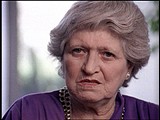You searched for: Auschwitz
<< Previous | Displaying results 651-700 of 878 for "Auschwitz" | Next >>
-
Ludmilla Page describes conditions in Oskar Schindler's munitions factory in Brünnlitz
Oral HistoryLudmilla was born to an assimilated Jewish family in Kishinev, Romania. She and her mother, a physician, were living in Poland when the Germans invaded on September 1, 1939. They were taken to Krakow. Ludmilla was forced to live in the Krakow ghetto; her mother was sent to the Warsaw ghetto. Ludmilla worked in a factory at the Plaszow labor camp for a businessman who was a friend of the German industrialist Oskar Schindler. In October 1944, Schindler attempted to save some Jewish workers by relocating them…
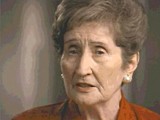
-
Thomas Buergenthal describes the liberation of the Sachsenhausen camp
Oral HistoryThomas's family moved to Zilina in 1938. As the Slovak Hlinka Guard increased its harassment of Jews, the family decided to leave. Thomas and his family ultimately entered Poland, but the German invasion in September 1939 prevented them from leaving for Great Britain. The family ended up in Kielce, where a ghetto was established in April 1941. When the Kielce ghetto was liquidated in August 1942, Thomas and his family avoided the deportations to Treblinka that occurred in the same month. They were sent…

-
Thomas Buergenthal describes a forced-labor camp in Kielce
Oral HistoryThomas's family moved to Zilina in 1938. As the Slovak Hlinka Guard increased its harassment of Jews, the family decided to leave. Thomas and his family ultimately entered Poland, but the German invasion in September 1939 prevented them from leaving for Great Britain. The family ended up in Kielce, where a ghetto was established in April 1941. When the Kielce ghetto was liquidated in August 1942, Thomas and his family avoided the deportations to Treblinka that occurred in the same month. They were sent…

-
Siegfried Halbreich describes conditions and forced labor in the Gross-Rosen camp
Oral HistoryAfter Germany invaded Poland on September 1, 1939, Siegfried fled with a friend. They attempted to get papers allowing them to go to France, but were turned over to the Germans. Siegfried was jailed, taken to Berlin, and then transported to the Sachsenhausen camp near Berlin in October 1939. He was among the first Polish Jews imprisoned in Sachsenhausen. Inmates were mistreated and made to carry out forced labor. After two years, Siegfried was deported to the Gross-Rosen concentration camp, where he was…
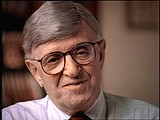
-
Barbara Marton Farkas describes assistance from the Red Cross at the end of the war
Oral HistoryDescribes assistance from the Red Cross at the end of the war
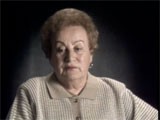
-
Vidkun Quisling
ArticleVidkun Quisling, Minister President of Norway from 1942 to 1945, was a Norwegian fascist and Nazi collaborator. His last name has come to mean “traitor” or “collaborator.”

-
Rebecca Pissirilo
ID CardRebecca was the oldest of three children born to Ladino-speaking, Sephardic-Jewish parents. The Pissirilos lived in Kastoria, a small town in the mountainous region of Greek Macedonia near the Albanian border. Rebecca's father was a successful fabric merchant. The Pissirilo children attended public schools. 1933-39: After finishing elementary school, Rebecca went on to study at secondary school. She liked to sing and enjoyed studying. Rebecca kept a diary, like some of the other girls in her class. The…
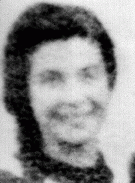
-
Bernhard Liebster
ID CardBernhard, who was from a religious Jewish family in the Polish town of Oswiecim, emigrated as a young man to Frankfurt, Germany. There he married Bertha Oppenheimer from the nearby town of Reichenbach. They settled in Reichenbach where they were one of 13 Jewish families. Bernhard worked as a shoemaker, and the couple raised three children. 1933-39: In a corner of his living room, Bernhard ran a small shop specializing in orthopedic shoes. Antisemitism was growing in Germany, but the townspeople of…
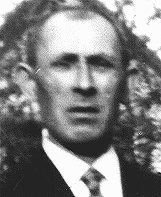
-
First page of Eva Ostwalt's cookbook
ArtifactEva Ostwalt was born in Cologne, Germany, to Jewish parents. She had two younger sisters, Kate and Trude. In 1927, Eva moved with her daughter, Heidemarie, and non-Jewish husband to Dresden. Eva and Karl later divorced, and Eva received custody of Heidemarie. Mother and daughter moved to Merano, Italy. When Eva’s passport expired in 1938, she had to return to Germany. Believing that Heidemarie would be safer with her father, Eva gave custody back to Karl in Dresden. Eva returned to Cologne, where both…

-
Page of recipes from Eva Ostwalt's cookbook
ArtifactEva Ostwalt was born in Cologne, Germany, to Jewish parents. She had two younger sisters, Kate and Trude. In 1927, Eva moved with her daughter, Heidemarie, and non-Jewish husband to Dresden. Eva and Karl later divorced, and Eva received custody of Heidemarie. Mother and daughter moved to Merano, Italy. When Eva’s passport expired in 1938, she had to return to Germany. Believing that Heidemarie would be safer with her father, Eva gave custody back to Karl in Dresden. Eva returned to Cologne, where both…
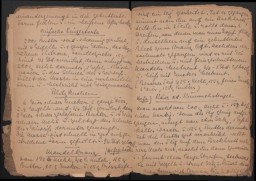
-
Recipes from Eva Ostwalt's cookbook
ArtifactEva Ostwalt was born in Cologne, Germany, to Jewish parents. She had two younger sisters, Kate and Trude. In 1927, Eva moved with her daughter, Heidemarie, and non-Jewish husband to Dresden. Eva and Karl later divorced, and Eva received custody of Heidemarie. Mother and daughter moved to Merano, Italy. When Eva’s passport expired in 1938, she had to return to Germany. Believing that Heidemarie would be safer with her father, Eva gave custody back to Karl in Dresden. Eva returned to Cologne, where both…
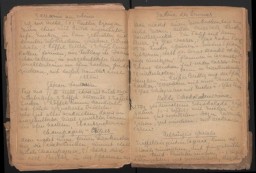
-
Jeno Katz
ID CardOne of eight children, Jeno was born to religious Jewish parents in the northeastern Hungarian town of Buj. The family later moved to the village of Zalkod, where Jeno's father ran a general store. His schooling over, Jeno became a cabinet maker. After he married, he and his wife Eloise settled down in Sarospatak, a picturesque town with a ruined medieval fortress and the Windischgratz castle. 1933-39: Jeno's sister Sadie, who had immigrated to the United States, came to visit her parents in Zalkod. At…
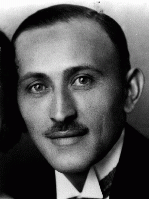
-
Lodz
ArticleNazi authorities established the Lodz ghetto in 1940. Learn about living conditions and forced labor in the ghetto, as well as deportations to and from there.

-
Dawid Sierakowiak
ArticleYoung people's diaries capture some of the most heartbreaking experiences of the Holocaust. Learn about the diary and experiences of David Sierakowiak.
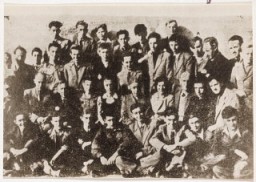
-
Mrs. Zinger's recipe for mocha cake
DocumentIlona Kellner and her family lived in Pelsöc, which became part of Hungary before World War II. Following the German occupation of Hungary, Ilona, her sister Vera, and her parents Karoly and Jolan were forced into a ghetto in another area of the town. In mid-June, the family was deported to the Auschwitz camp in German-occupied Poland. Ilona's parents were killed in the gas chambers at Birkenau. In early August, Ilona and her sister were deported to Hessisch Lichtenau, a subcamp of the Buchenwald…
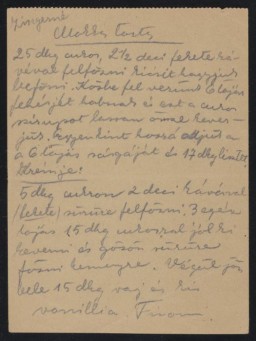
-
Mariska's recipe for hazelnut cake
DocumentIlona Kellner and her family lived in Pelsöc, which became part of Hungary before World War II. Following the German occupation of Hungary, Ilona, her sister Vera, and her parents Karoly and Jolan were forced into a ghetto in another area of the town. In mid-June, the family was deported to the Auschwitz camp in German-occupied Poland. Ilona's parents were killed in the gas chambers at Birkenau. In early August, Ilona and her sister were deported to Hessisch Lichtenau, a subcamp of the Buchenwald…
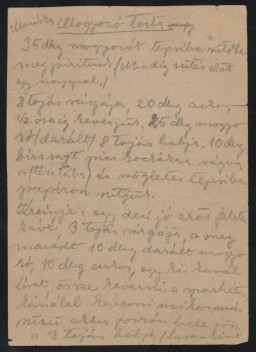
-
Ilona Kellner's recipe for various strudel fillings
DocumentIlona Kellner and her family lived in Pelsöc, which became part of Hungary before World War II. Following the German occupation of Hungary, Ilona, her sister Vera, and her parents Karoly and Jolan were forced into a ghetto in another area of the town. In mid-June, the family was deported to the Auschwitz camp in German-occupied Poland. Ilona's parents were killed in the gas chambers at Birkenau. In early August, Ilona and her sister were deported to Hessisch Lichtenau, a subcamp of…
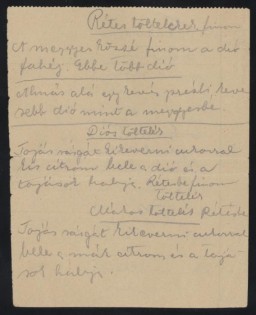
-
Ilona Kellner's recipe for butter scones with jam
DocumentIlona Kellner and her family lived in Pelsöc, which became part of Hungary before World War II. Following the German occupation of Hungary, Ilona, her sister Vera, and her parents Karoly and Jolan were forced into a ghetto in another area of the town. In mid-June, the family was deported to the Auschwitz camp in German-occupied Poland. Ilona's parents were killed in the gas chambers at Birkenau. In early August, Ilona and her sister were deported to Hessisch Lichtenau, a subcamp of the Buchenwald…
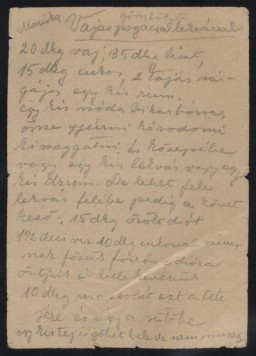
-
Doriane Kurz describes appell (roll call) in Bergen-Belsen
Oral HistoryDoriane's Jewish family fled to Amsterdam in 1940, the same year Germany occupied the Netherlands. Her father died after deportation to Auschwitz. After their mother was seized, Doriane and her brother hid with gentiles. The three were reunited at Bergen-Belsen, where they were deported via Westerbork. They were liberated during the camp's 1945 evacuation, when Doriane was 9. Her mother died of cancer soon after Doriane helped her recover from typhus. Doriane and her brother immigrated to the United States.
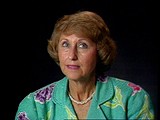
-
Doriane Kurz recalls Bergen-Belsen prisoners hauling wagons of corpses
Oral HistoryDoriane's Jewish family fled to Amsterdam in 1940, a year that also saw the German occupation of the Netherlands. Her father perished after deportation to Auschwitz. After their mother was seized, Doriane and her brother hid with gentiles. The three were reunited at Bergen-Belsen, where they were deported via Westerbork. They were liberated during the camp's 1945 evacuation. Doriane's mother died of cancer soon after Doriane helped her recover from typhus.
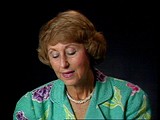
-
Nina Kaleska describes the formation of the ghettos in Grodno
Oral HistoryNina and her family were confined in a ghetto after the Germans entered Grodno in 1941. Her parents and then her sister perished after deportation to the Auschwitz concentration camp. Nina survived in the camp for two years. As the Soviet army advanced in 1945, Nina and other inmates from the camp were transferred first to the Ravensbrueck camp in Germany and then to the Retzof-am-Richlin camp. Nina was liberated in May 1945, during a forced march from the camp.
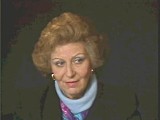
-
Hanne Hirsch Liebmann describes harassment and anti-Jewish sentiment in Germany
Oral HistoryHanne's family owned a photographic studio. In October 1940, she and other family members were deported to the Gurs camp in southern France. In September 1941, the Children's Aid Society (OSE) rescued Hanne and she hid in a children's home in Le Chambon-sur-Lignon. Her mother perished in Auschwitz. In 1943, Hanne obtained false papers and crossed into Switzerland. She married in Geneva in 1945 and had a daughter in 1946. In 1948, she arrived in the United States.
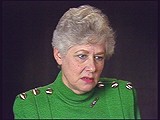
-
Alice Lok Cahana describes arrival at Bergen-Belsen
Oral HistoryGermany occupied Hungary in 1944. Alice was deported to Auschwitz in the same year. At one time she was selected for the gas chamber, but survived because of a malfunction. As Allied forces approached the camp, Alice and other inmates were evacuated to the Guben labor camp. Alice, her sister, and another girl escaped during a forced march from the camp but were found and sent on to Bergen-Belsen. Alice's sister was taken to a Red Cross hospital, but Alice never saw her again. After the war, Alice…
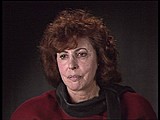
-
Hana Mueller Bruml describes the vibrant cultural life in the Theresienstadt ghetto
Oral HistoryIn 1942, Hana was confined with other Jews to the Theresienstadt ghetto, where she worked as a nurse. There, amid epidemics and poverty, residents held operas, debates, and poetry readings. In 1944, she was deported to Auschwitz. After a month there, she was sent to Sackisch, a Gross-Rosen subcamp, where she made airplane parts at forced labor. She was liberated in May 1945.

-
Sam Itzkowitz describes forced labor in the Makow ghetto
Oral HistoryThe Germans invaded Poland in September 1939. When Makow was occupied, Sam fled to Soviet territory. He returned to Makow for provisions, but was forced to remain in the ghetto. In 1942, he was deported to Auschwitz. As the Soviet army advanced in 1944, Sam and other prisoners were sent to camps in Germany. The inmates were put on a death march early in 1945. American forces liberated Sam after he escaped during a bombing raid.
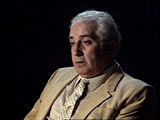
-
Hana Mueller Bruml describes an encounter with a non-Jewish friend in Prague
Oral HistoryIn 1942, Hana was confined with other Jews to the Theresienstadt ghetto, where she worked as a nurse. There, amid epidemics and poverty, residents held operas, debates, and poetry readings. In 1944, she was deported to Auschwitz. After a month there, she was sent to Sackisch, a Gross-Rosen subcamp, where she made airplane parts at forced labor. She was liberated in May 1945.
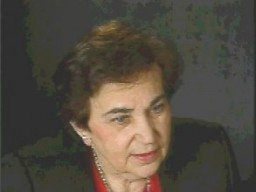
-
Elie Wiesel: Days of Remembrance excerpts
ArticleExcerpts from Elie Wiesel's addresses during US Holocaust Memorial Museum Days of Remembrance commemorations in 2001, 2002, 2003, and 2004.
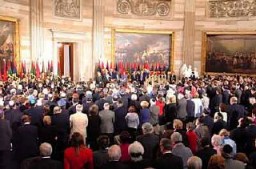
-
Bergen-Belsen: Key Dates
ArticleExplore a timeline of the history of the Bergen-Belsen camp in the Nazi camp system. Initially a POW camp, it became a concentration camp in 1943.
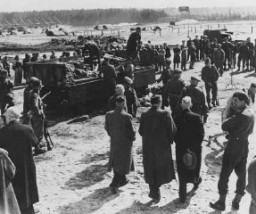
-
Nazi Propaganda
ArticleNazi propaganda had a key role in the persecution of Jews. Learn more about how Hitler and the Nazi Party used propaganda to facilitate war and genocide.

-
Death Marches
ArticleAs Allied forces approached Nazi camps in the last months of WWII, the SS organized brutal “death marches” (forced evacuations) of concentration camp inmates.

-
Jewish Resistance
ArticleResistance comes in many forms, both violent and non-violent, collective and individual. Learn more about Jewish resistance to Nazi oppression.

-
Misuse of Holocaust Imagery Today: When Is It Antisemitism?
ArticleLearn more about the modern misuse of images and symbols from the Holocaust and how this distortion can lead to antisemitism.
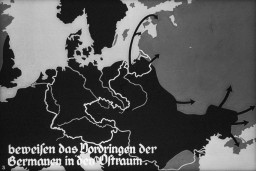
-
Theresienstadt
ArticleThe Theresienstadt camp/ghetto served multiple purposes during its existence from 1941-45 and had an important propaganda function for the Germans. Learn more.

-
Wartime Fate of the Passengers of the St. Louis
ArticleIn May 1939, the St. Louis set sail from Germany to Cuba. Most of the passengers, fleeing Nazi Germany, were denied entry. Learn more about their fates.
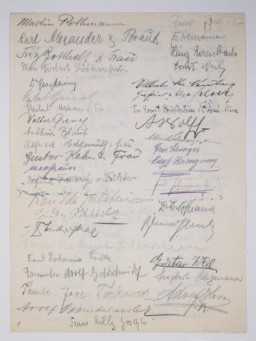
-
Armed Jewish Resistance: Partisans
ArticleFacing overwhelming odds, Jews throughout occupied Europe attempted armed resistance against the Germans and their Axis partners.
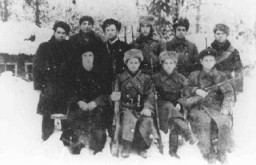
-
Berlin
ArticleBerlin was home to Germany’s largest Jewish community. It was also the capital of the Third Reich and the center for the planning of the "Final Solution."

-
Hungary after the German Occupation
ArticleThe Nazis invaded Hungary in 1944 to prevent the government from negotiating an armistice with the Allies. Learn more about conditions in occupied Hungary.

-
Tarnow
ArticleLearn about the prewar Jewish community of Tarnow, German occupation, deportations and killings of the Jewish population, ghettoization, and resistance.

-
Polish Victims
ArticleIn September 1939, the Germans launched a campaign of terror intended to destroy the Polish nation and culture. Learn more about the German occupation of Poland.

-
German Invasion of Poland: Jewish Refugees, 1939
ArticleWhen Germany invaded Poland in September 1939, hundreds of thousands of Jewish and non-Jewish refugees fled the advancing German army. Learn about their experiences.
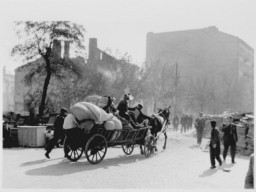
-
Eduard Schulte
ArticleEduard Schulte was a prominent German industrialist and secret anti-Nazi who leaked the first report to the west that the Nazis intended to murder all Jews in Europe.
-
Life in the Ghettos
ArticleDuring the Holocaust, Jews were forced into ghettos with terrible living conditions, overcrowding, and starvation. Learn more about life in the Lodz ghetto.

-
Rescue and Resistance
ArticleWhile some European Jews survived the Holocaust by hiding or escaping, others were rescued by non-Jews. Learn more about these acts of resistance.

-
The War Refugee Board
ArticleThe War Refugee Board was formed in 1944 by executive order under President Roosevelt. It was tasked with the rescue and relief of victims of Nazi oppression.

-
Final Solutions: Murderous Racial Hygiene, 1939–1945
ArticleBased on their ideas about race, the Nazis mass murdered people with disabilities; people perceived as threats in occupied Poland; and Jewish people. Learn more.

-
King Christian X of Denmark
ArticleDid King Christian X of Denmark wear a yellow star in support of the Danish Jews? Read more about the historical truth behind the legend.
-
Persecution of Roma (Gypsies) in Prewar Germany, 1933–1939
ArticleBeginning in 1933, the Nazis persecuted Roma (often pejoratively called “Gypsies”) based on underlying prejudices and racism. Learn how this harassment escalated to genocide.

-
Helena Husserlova with her daughter, Zdenka
PhotoIn this portrait, Helena Husserlova, wearing a Jewish badge, poses with her daughter Zdenka who is holding a teddy bear. The photograph was taken shortly before they were deported to Theresienstadt. Zdenka was born in Prague on February 6, 1939. On October 10, 1941, when Zdenka was just two and a half years old, her father was deported to the Lodz ghetto. He died there almost a year later, on September 23, 1942. Following his deportation, Helena and Zdenka returned to Helena's hometown to live with…
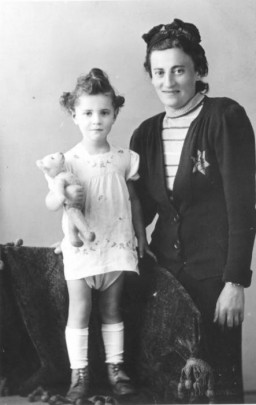
-
Zsofi Brunn (back row, center) poses with the orphans under her care
PhotoZsofi Brunn and members of her family were deported from Hungary to Auschwitz-Birkenau in June 1944. Her husband and mother were killed upon arrival. Zsofi and her daughter Anna were transferred to a labor camp in Czechosovakia. They were eventually liberated by Soviet forces in May 1945. Zsofi and Anna returned to Hungary. They moved to Rakosszentmihaly, near Budapest. There, Anna finished high school, and Zsofi directed a Jewish orphanage. This photo shows Zsofi (back row, center) posing with the…
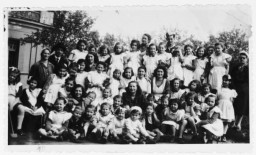
-
Raoul Wallenberg Arrives in Budapest
Timeline EventJuly 9, 1944. On this date, Raoul Wallenberg arrived in Budapest and began his wartime rescue efforts.
